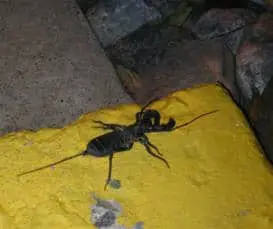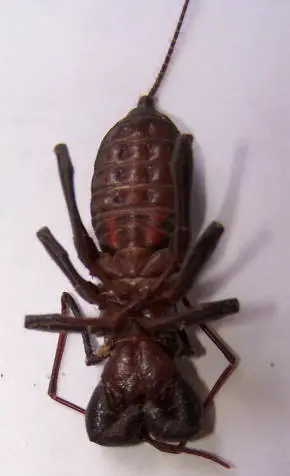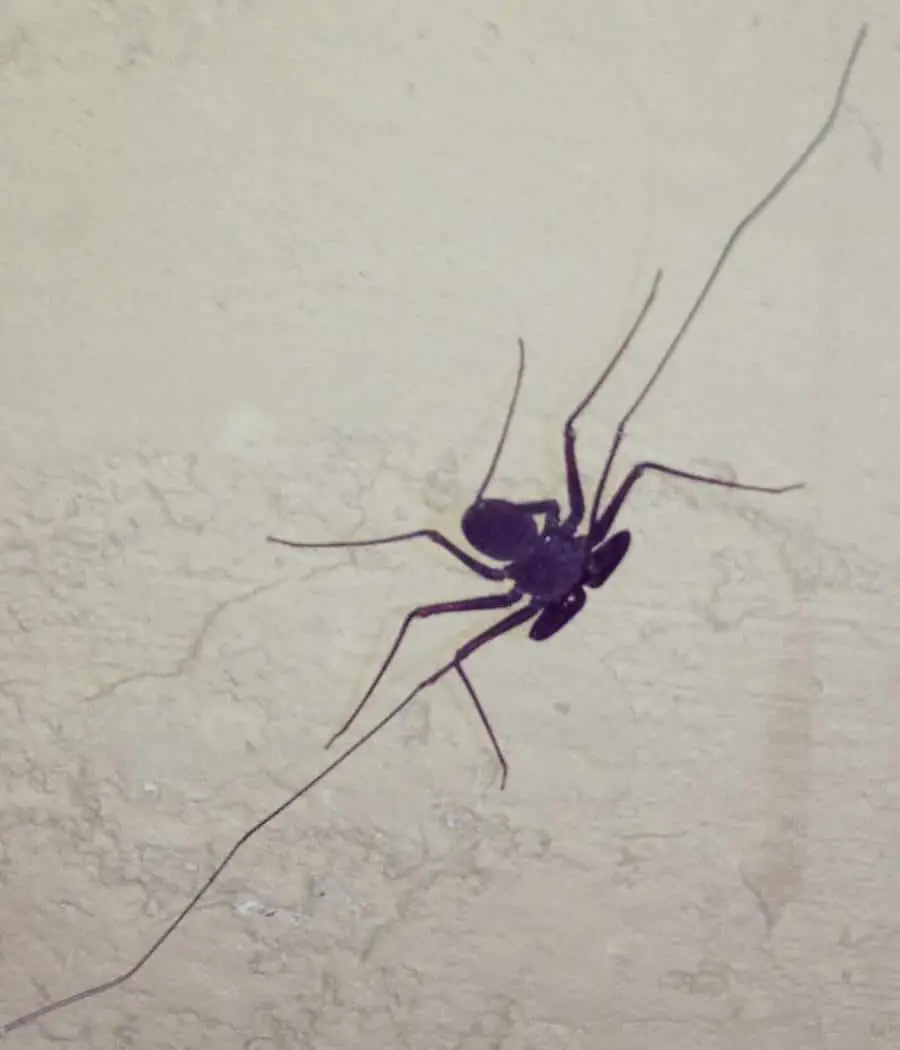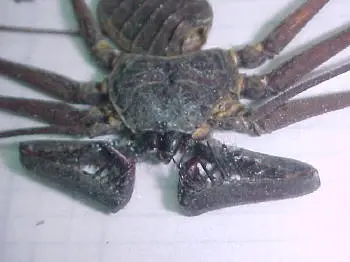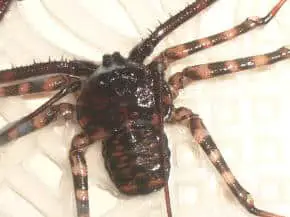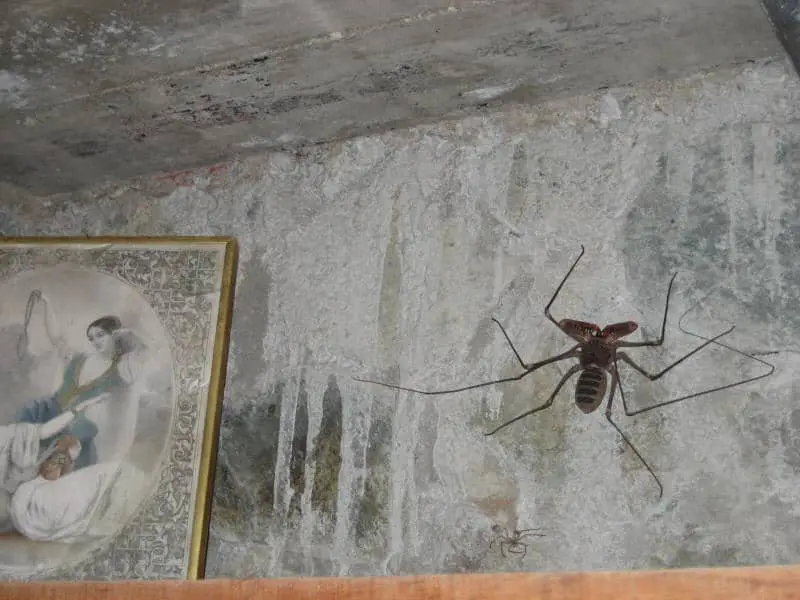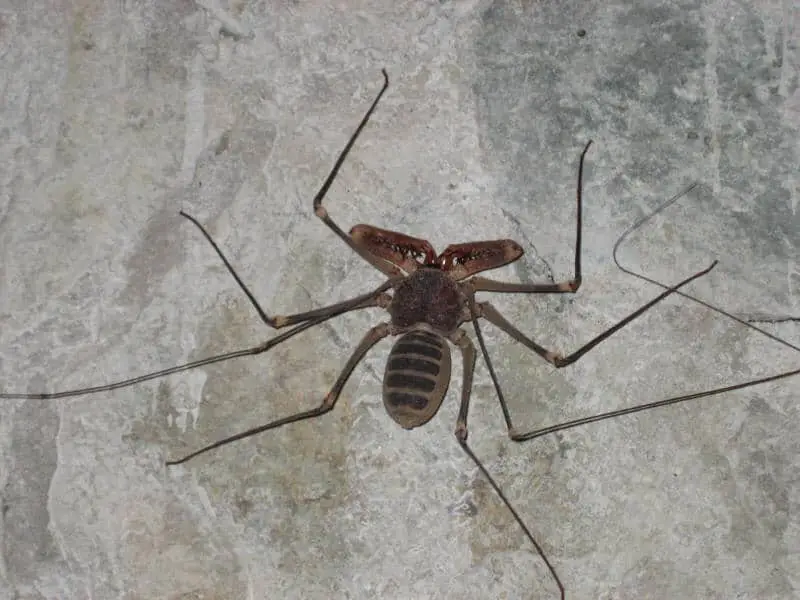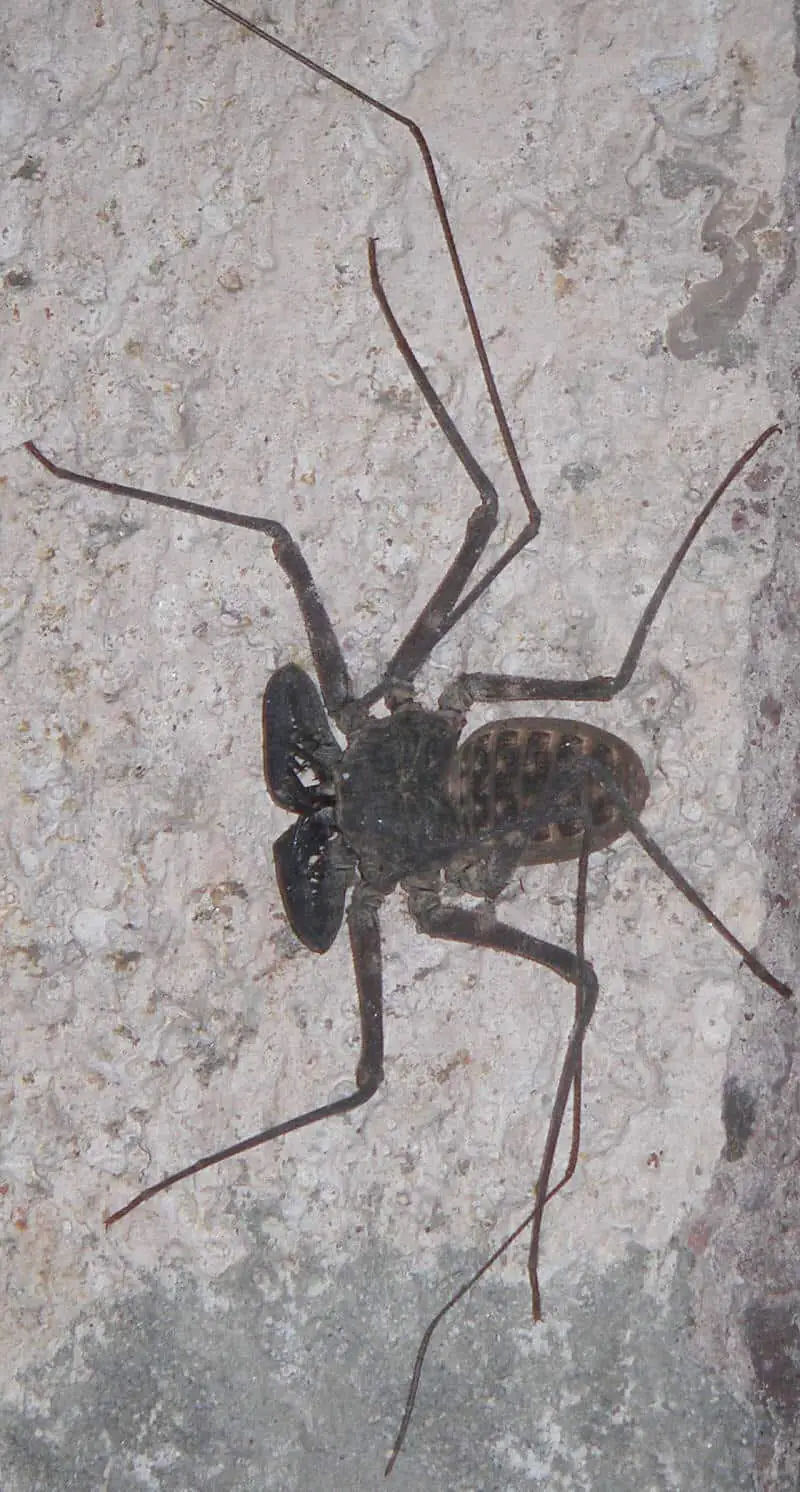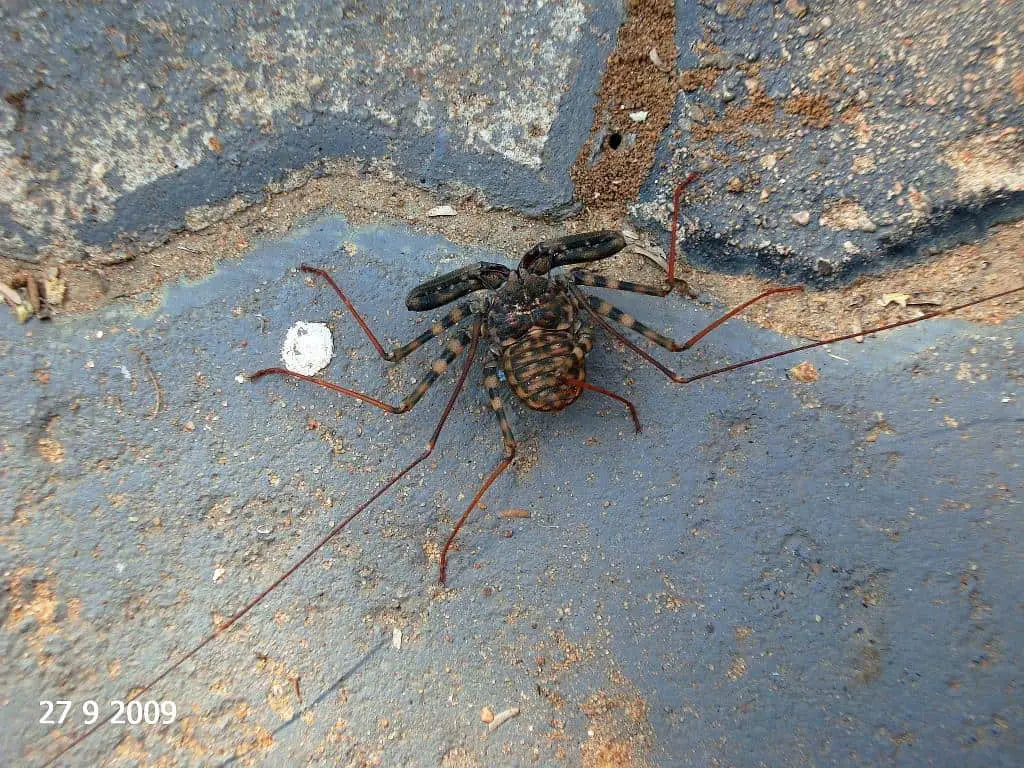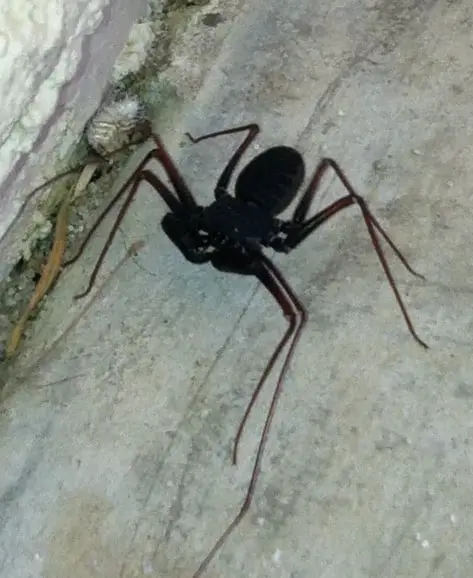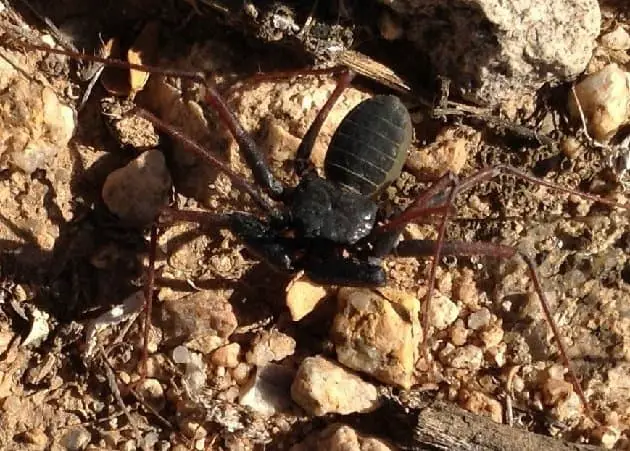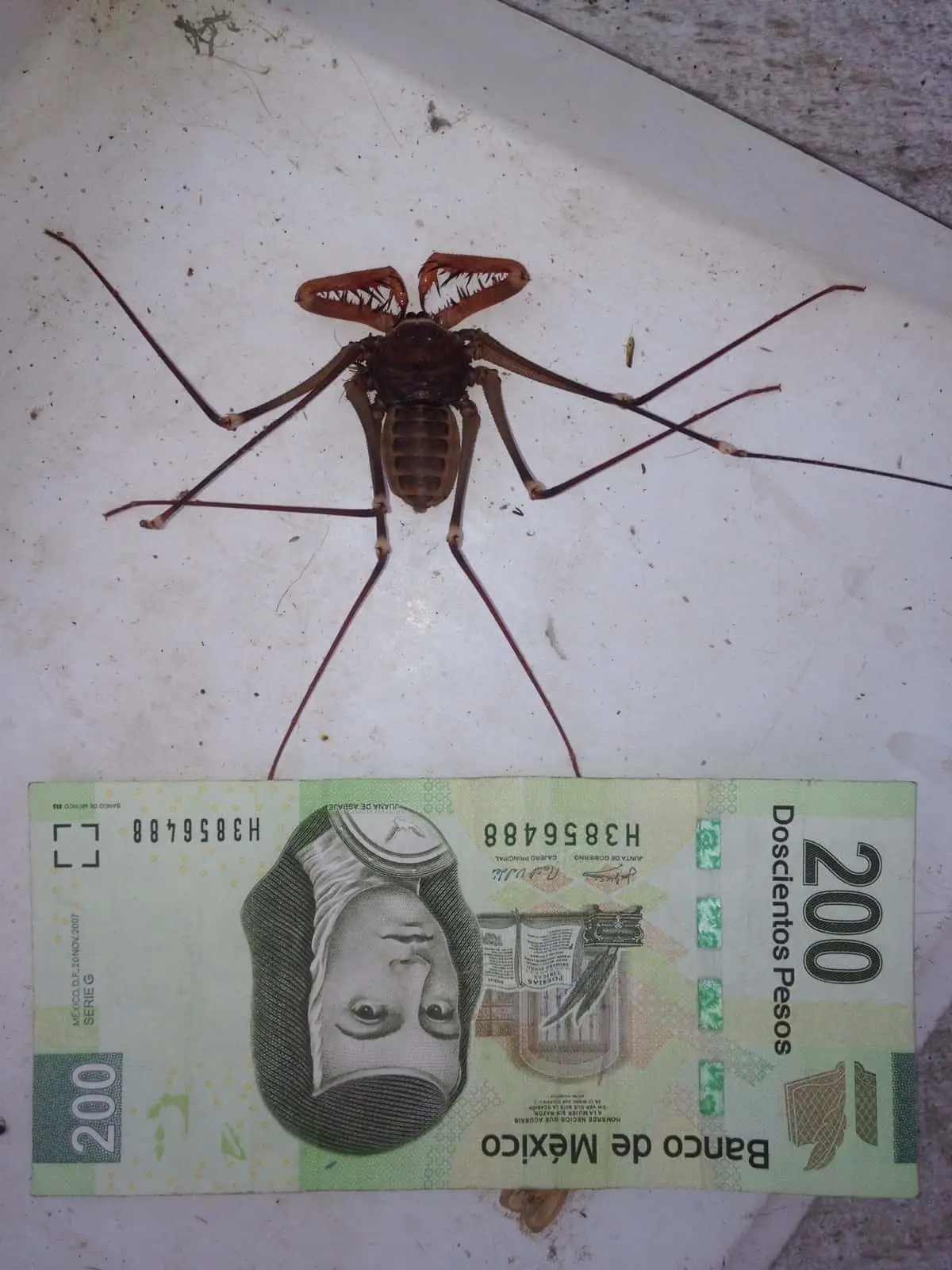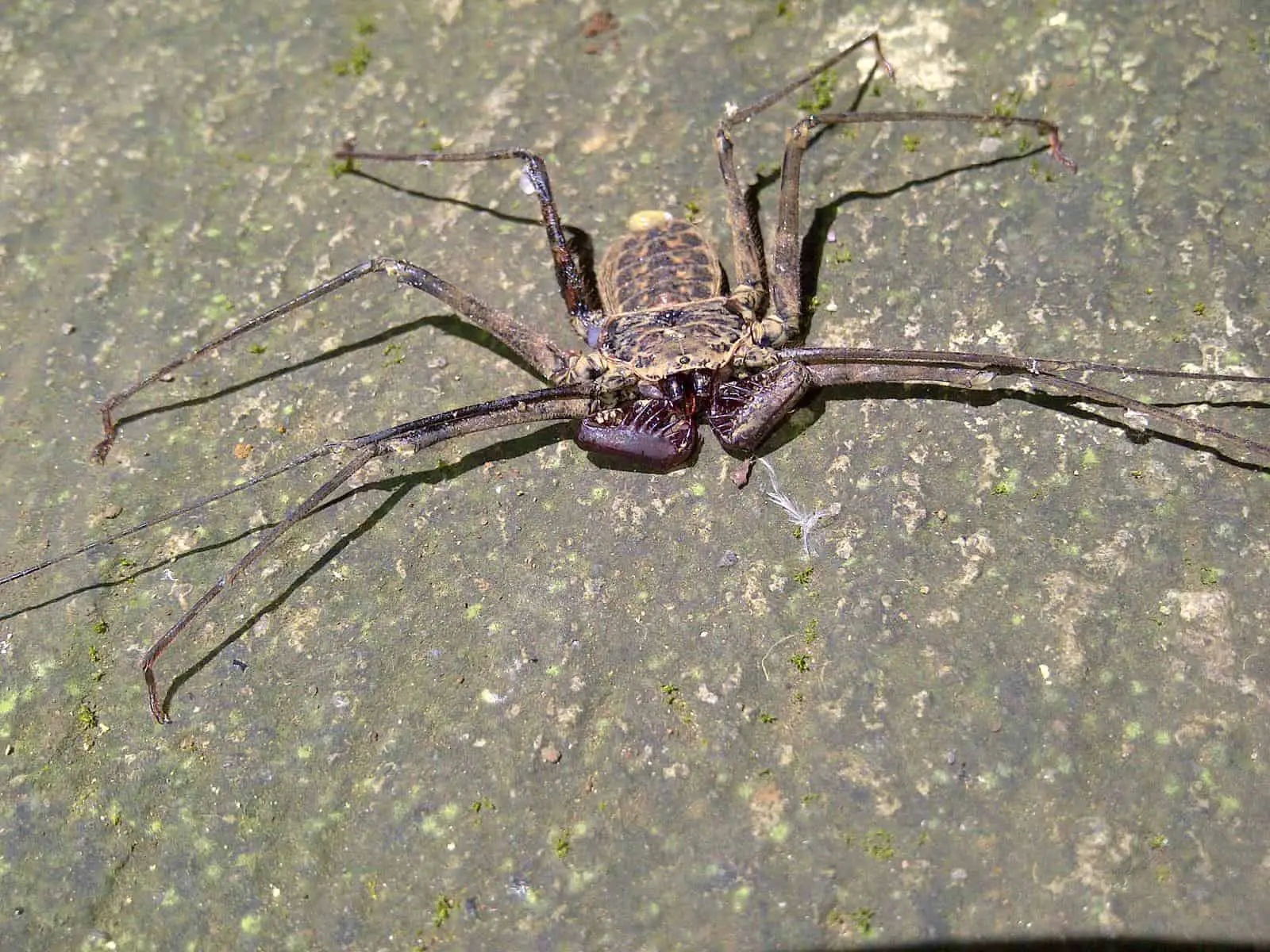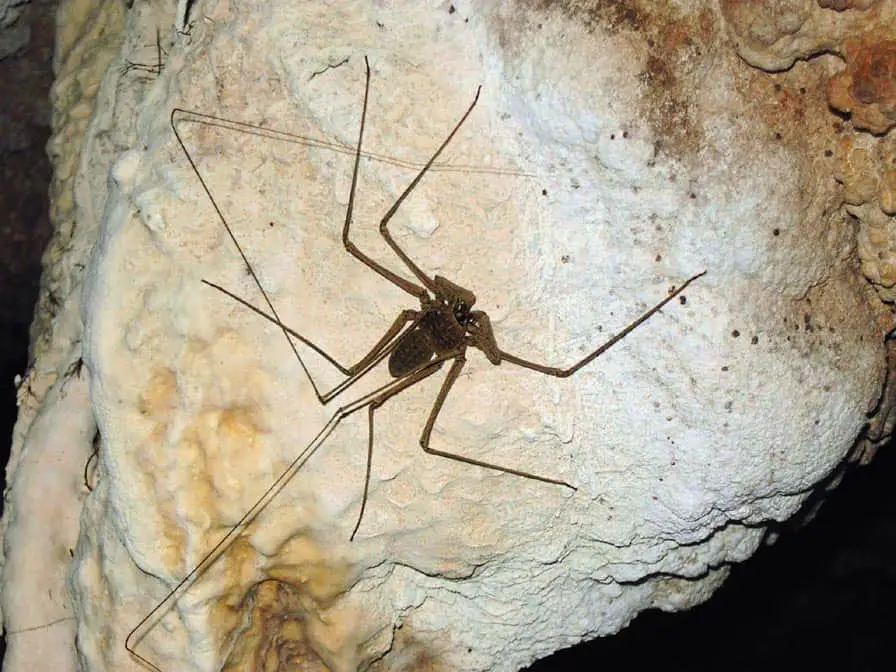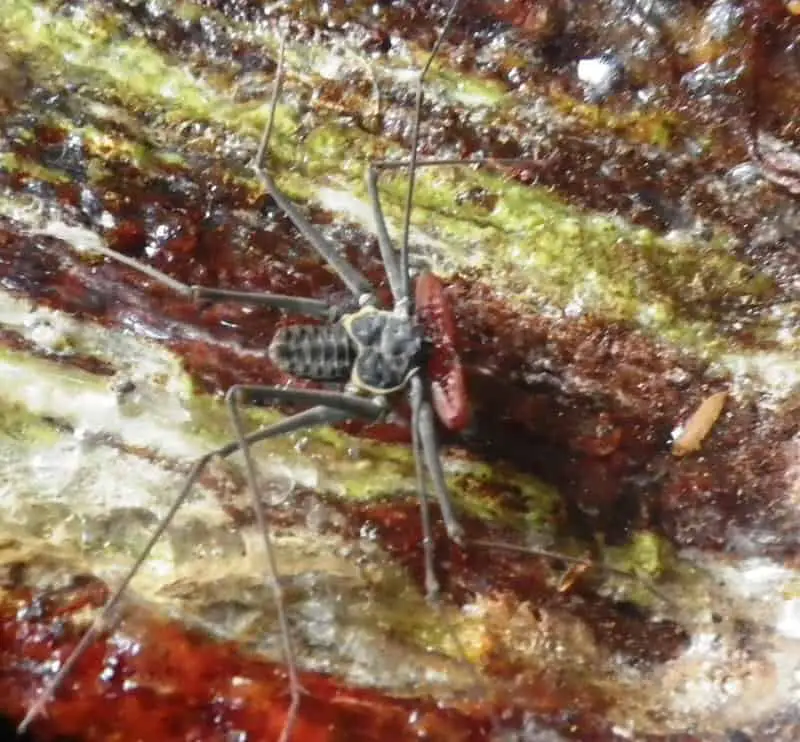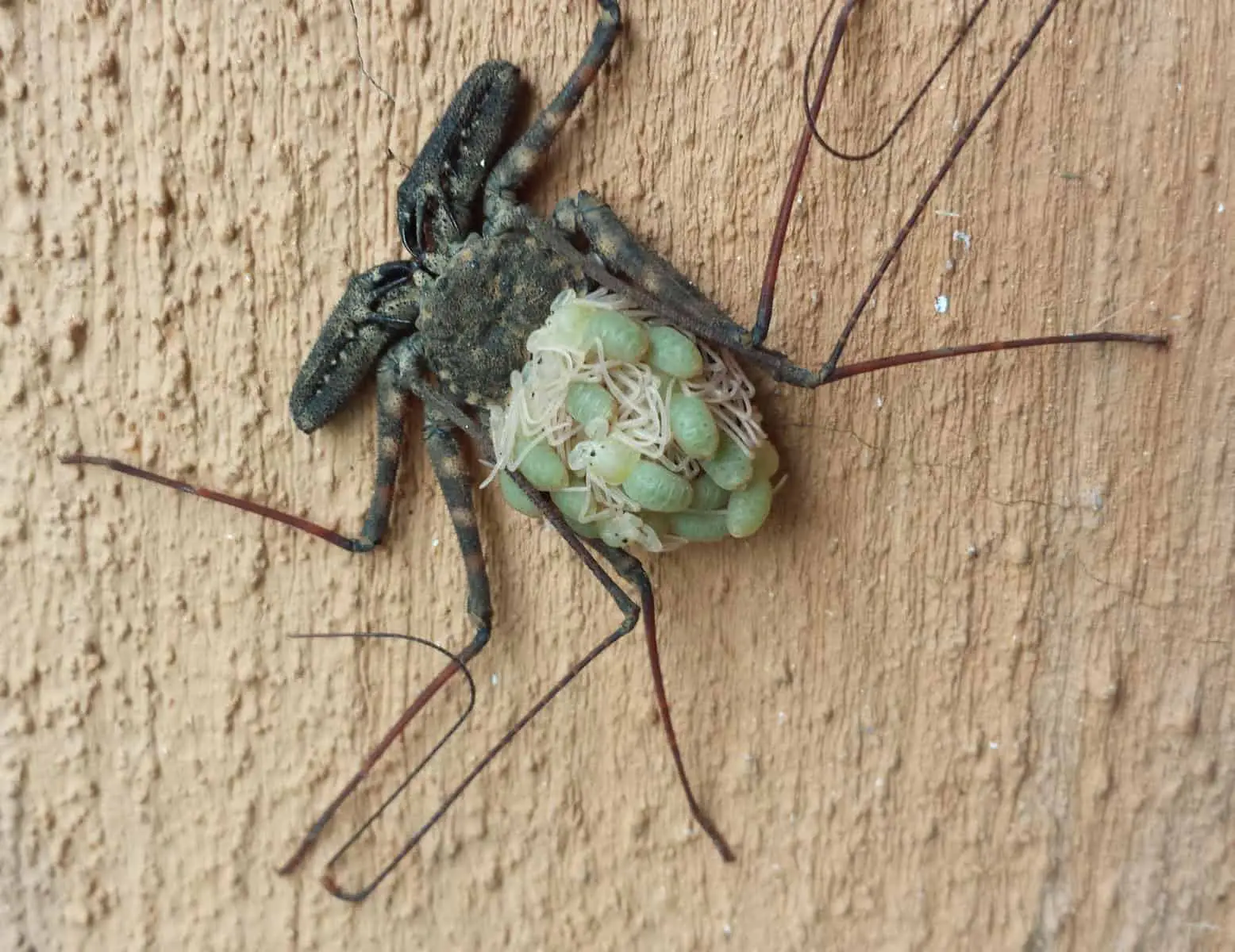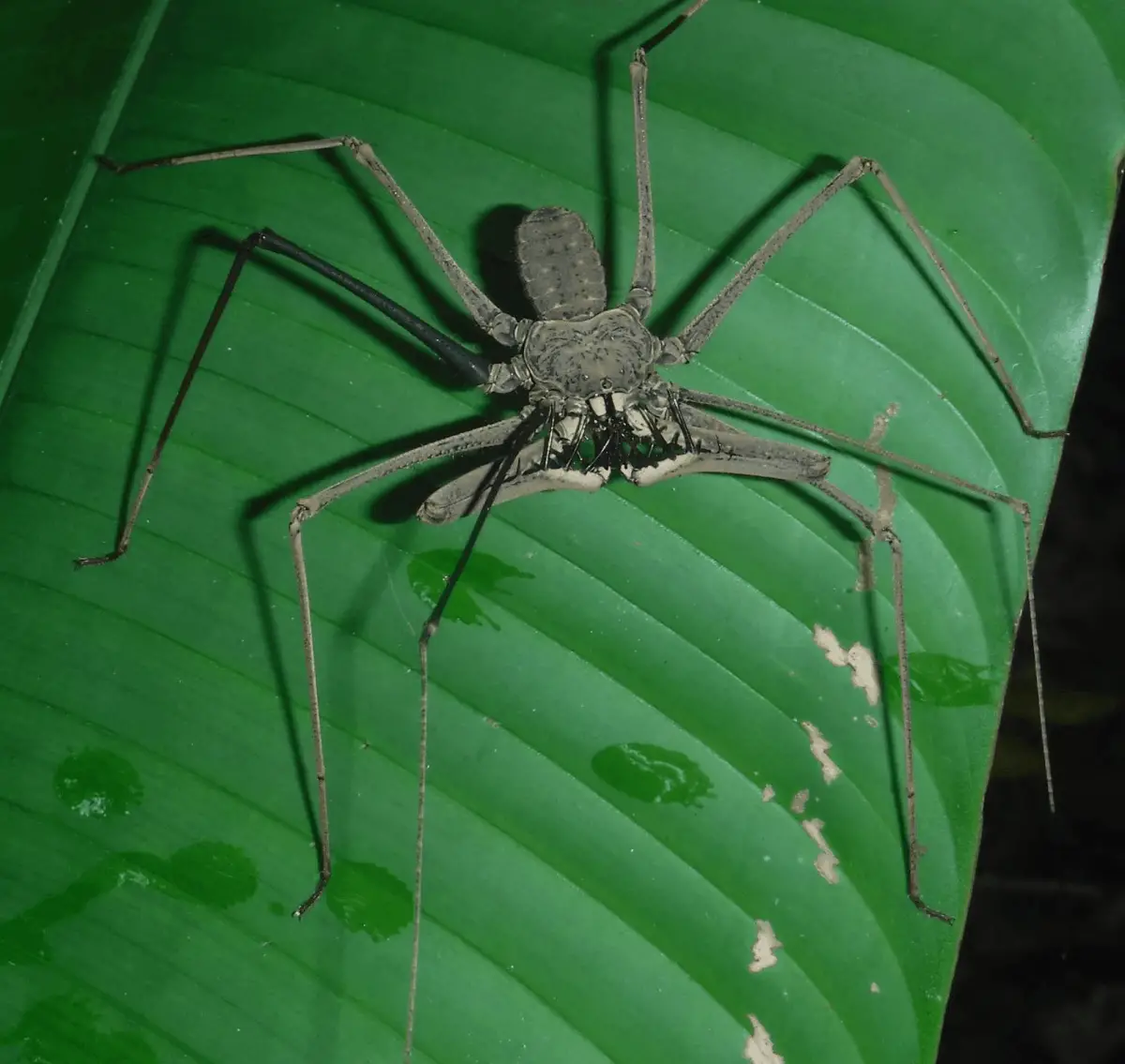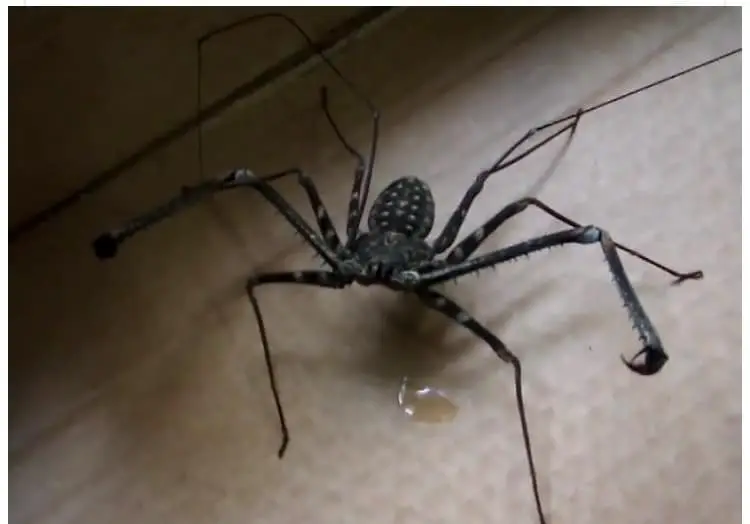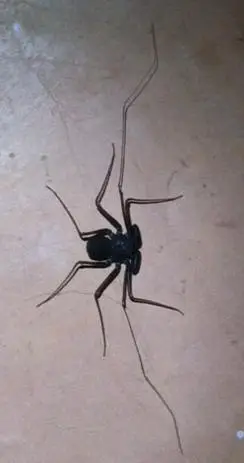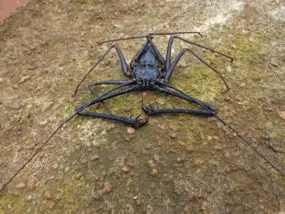Tailless Whip Scorpions look at first glance like spiders. The first appendages (pedipalps) are modified for grasping prey, with hook-like projections. The first true pair of legs is modified to serve as “feelers,” and are long, delicate, and whip-like, with many fine hairs.
Tailless whip scorpions are reclusive predators of insects. They hunt nocturnally, using their long, delicate first pair of legs to find their food. The spined pedipalps impale and crush the prey and then transfer it to the chelicerae (jaws). Tailless whip-scorpions can only pinch their prey; they lack venom glands. Their relation, the whip scorpion have a life pattern similar to the true scorpions, but they do not possess a poisonous sting.
Their flat body enables them to squeeze into extremely narrow cracks and crevices, where they prey on small arthropods and worms. A few of the larger species also attack small vertebrates, especially frogs. The palps are developed into strong pincers equipped with sharp teeth and spines, which are used for catching and crushing prey. The first pair of legs are generally much longer and thinner than the other three pairs, and may have more a tactile function rather than walking. The species shown opposite belongs to the family Theliphonidae, whose members have a characteristic long, thread-like tail. The tail, which bears numerous fine hairs, has only a sensory function, but can be waved about in a whip-like manner – hence the common name.
Although whip scorpions are not venomous, some species defend themselves by squirting an acrid fluid from defence glands situated at the base of the tail. n the other families of the order, the tail is much reduced or absent altogether – these forms are sometimes called whip spiders, rather than whip scorpions. The group as a whole is largely confined to the tropics and sub-tropics, but nevertheless widely distributed with representatives found in China, Japan, India and other parts of Southern Asia, the greater part of Africa, and in Central and South America.
Whip Scorpions (Thelyphonida) are an arachnid order comprising invertebrates commonly known as whip scorpions or vinegaroons (also spelled vinegarroons and vinegarones). They are often called uropygids in the scientific community based on an alternative name for the order, Uropygi (which may then also include the order Schizomida). The name “whip scorpion” refers to their resemblance to true scorpions and possession of a whiplike tail. “Vinegaroon” is based on their ability when attacked to discharge an offensive liquid which contains acetic acid, producing a vinegar-like smell. The first 3 photos in the photos below are of Whip Scorpions. Check the names.
All photos are copyright to their owners and may not be reproduced without permission.


